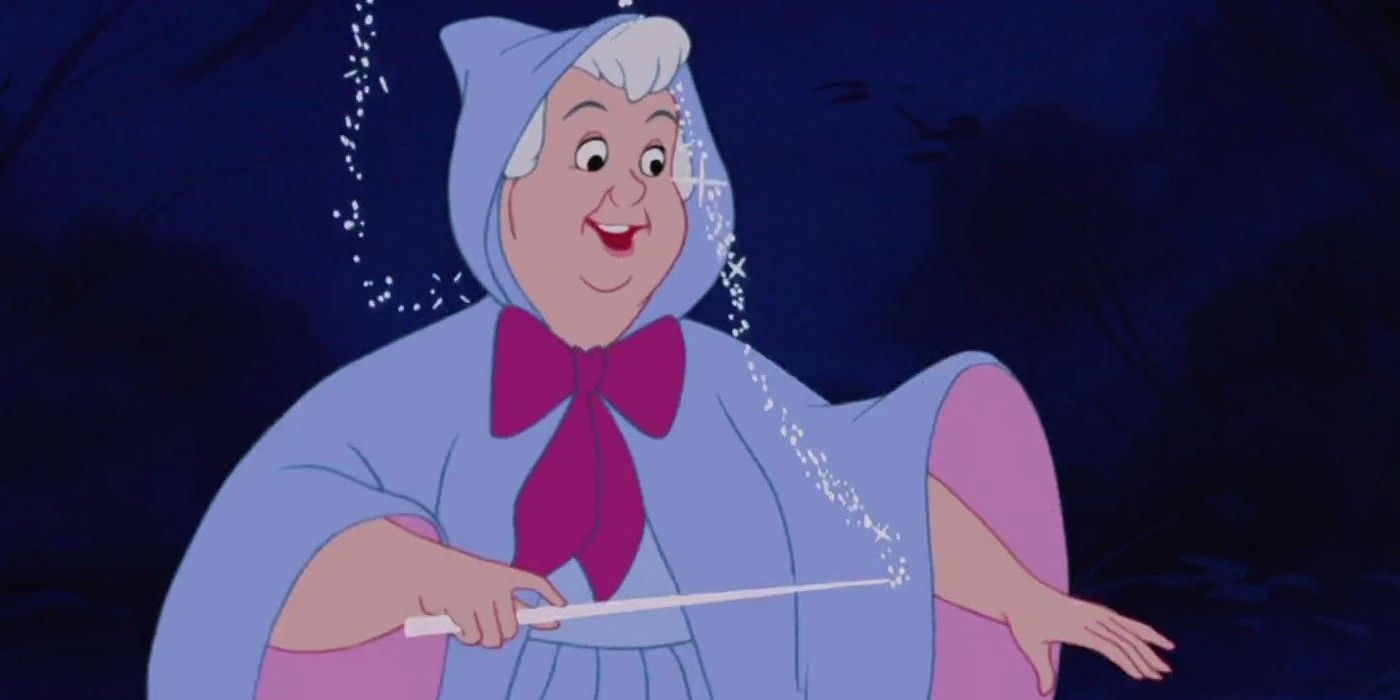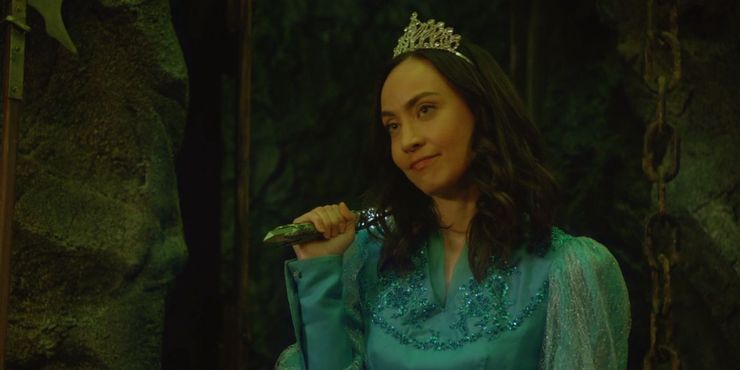Of all the characters in Disney's classic 1950 film Cinderella, the Fairy Godmother is perhaps one of the most memorable. She magically appears to save the day, giving the titular heroine everything she needs to escape the cruel life which she has been forced into by her family and take her place among the Disney princesses. Disney's version of the character was filled with Disney's characteristic style, but one particular decision about the Fairy Godmother would not only shape her role in the film itself, but go on to inspire an entire archetype for future television shows and movies.
First, it's important to understand that Cinderella isn't a Disney creation, though it may be the most well-known representation of it. Depending on your definition, the story dates back hundreds (if not thousands) of years. Disney's change to the tale may seem like a small one at first. In Cinderella she is called as "[Cinderella's] Fairy Godmother", where as Charles Perrault's take on the tale (which while not definitive is exemplary of the character) she is referred to by the narrator as "Her godmother, who was a fairy". The distinction here is in the older, French version, she is a family member who just so happens to be magical. The two qualities are only related by the fact that they happen to be true of the same person. In Disney's version however, "Fairy Godmother" becomes her job title. She is not a family member who happens to have the magical skills Cinderella needs, she is there specifically to provide the young heroine with magical aid. It's like the difference between your aunt who knows a bit of medicine, and a doctor who specializes in your particular ailment.
While the implications of this change might not be apparent in the Disney adaptation, it becomes much clearer when considering television shows and movies which built upon the Fairy Godmother archetype. One example which takes the concept to its logical extreme is The Fairly OddParents. The show is centred around Timmy Turner and his fairy godparents (Cosmo and Wanda). Said fairy godparents had to undertake extensive training to gain their role, were specifically assigned to Timmy, and are governed by "Da Rules", the rule book which explains what they are and are not permitted to do. While Cosmo and Wanda become something of a family with Timmy, it is made painfully clear that they are only assigned to him so long as he has need of them in their official capacity (although the live action movie did muddle that point somewhat). Once he's done with them, they'll presumably move on to another needy child.
The CW show Legends of Tomorrow also plays around with the idea of fairy godmother as magical caseworker. During the show's fourth season, the character Nora Darhk becomes a fairy godmother (taking over the position from one of the show's antagonists), and is still doing the job in season 5. While the rules and regulations she has to deal with are not as extensively covered as those of The Fairly OddParents, she still has to deal with the emotional problems of her charges, and is bound to using her powers to figure out a way to make them happier.
In sharp contrast to the Disney version, Nora is very clearly shown to be doing a job. She is shown to be doing this job for multiple children, and she speaks about many more. Because The Legends of Tomorrow treats being a Fairy Godmother like work, and that's how Nora talks about it. Ultimately, she finds it fulfilling, but that doesn't mean that it's magical every day, and she complains about it just like anyone might complain about what they do for a living.
Even when a show or a movie might shake try to shake things up and go against the popular image Disney created, the result is still based on the idea of "Fairy Godmother" as a role, rather than a family member. That's just what happened with The Fairy Godmother in Shrek 2. While this Fairy Godmother has a more devilish side to her, making deals with various characters (such as the king) and doing so in a way which benefits herself, she is still very much playing a part. She's a very influential figure within the kingdom of Far Far Away, and she has own business; a factory in which she manufactures magical goods. Her goals might be selfish, but she is still playing up to the image of "The Fairy Godmother" and doing very well because of it.
Each of these Fairy Godparents have been very different characters, working under very different conditions, and that's the beauty of what Disney did when it made that little change. Because "Fairy Godmother" is a job title, literally anyone can be one. Imagine all the fun storytelling possibilities that opens up. How do Fairy Godparents get hired? Are they employees? independent contractors? Do they work for a company or an agency? A hypothetical Fairy Godparent show could be just as easily about one character learning responsibility after leading a charmed life as it could be about a group of disgruntled office workers having to put up with life in a terrible work place. Both of these possibilities are just as rooted in the source material as the other. While there are multiple angles about one character having a magical relative, Charles' Perrault's take on the concept doesn't have the same flexibility to it as Disney's. The creators behind Cinderella didn't just change the Fairy Godmother to make her fit in more easily with their story, they set the stage for everyone to be able to put their own unique spin on her.


